Assyrian King Ashurbanipal’s Great Library With Thousands Of Cuneiform Tablets
A. Sutherland - AncientPages.com - The oldest surviving royal library in the world is that of Ashurbanipal, King of Assyria (668-around 630 BC). British Museum archaeologists discovered more than 30,000 cuneiform tablets and fragments at his capital, Nineveh (modern Kuyunjik).
Alongside historical inscriptions, letters, administrative and legal texts, were found thousands of divinatory, magical, medical, literary, and lexical texts.
Part of a circular clay tablet with depictions of constellations (planisphere); the reverse is uninscribed; restored from fragments and incomplete; partly accidentally vitrified in antiquity during the destruction of the place where it was found. Found in Kuyunjik, ancient Nineveh, in the so-called “Library of Ashurbanipal”. Neo-Assyrian period. Image source:
This treasure-house of learning has held unparalleled importance to the modern study of the ancient Near East ever since the first fragments were excavated in the 1850s.
King Ashurbanipal was the ruler of ancient Assyria, famous for his military accomplishments. However, Ashurbanipal's establishment of a great library in the city of Nineveh is considered of far greater importance.
Assurbanipal was the last great king of the Assyrian Empire (934-609 BC), and reigned from 668 BC to about 630 BC. It took him four years to suppress a revolt organized by his older brother Shamash-shum-ukin, the king of Babylon (667-648 BC). Still, Assurbanipal's reign lasted much longer than his predecessors and he was a capable ruler who controlled almost the entire Near East.
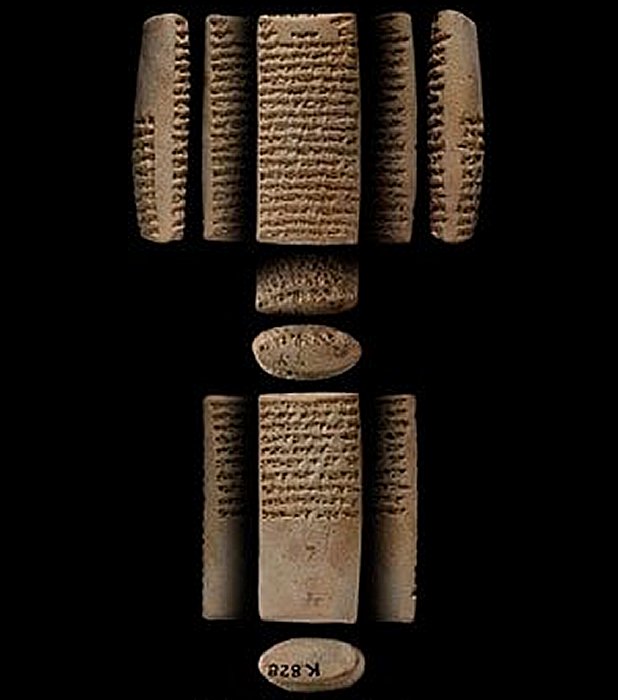
Alongside historical inscriptions, letters, administrative and legal texts, were found thousands of divinatory, magical, medical, literary, and lexical texts. Image credit: The British Museum
The great library is Ashurbanipal's great work who was an educated ruler, supporting learning and those who could call themselves literary people.
In the introduction to his 'Annals' inscribed on his great ten-sided prism in the British Museum, he says: 'I, Ashurbanipal, within it (i.e., the palace) understood the wisdom of Nebo, all the art of writing of every craftsman, of every kind, I made myself master of the mall (i.e., of the various kinds of writing').
Ashurbanipal's library was not the first library of its kind but it was one of the largest and one of the ones to survive to the present day.
A collection of 20,000 to 30,000 cuneiform tablets contains approximately 1,200 distinct texts. Like a modern library, this collection was spread out into many rooms according to the subject matter. Some rooms were devoted to history and government, others to religion and magic, and still others to geography, science, poetry, etc.
The ancient Sumerian "Epic of Gilgamesh" and a nearly complete list of ancient Near Eastern rulers among other priceless writings were preserved in Ashurbanipal's palace library at Nineveh.
Ashurbanipal's collection even held what could be called classified government materials. This collection is now housed at the British Museum.
The importance of Ashurbanipal's Library can not be overstated and as a scholar, Ashurbanipal reached greatness.
Written by – A. Sutherland AncientPages.com Senior Staff Writer
Copyright © AncientPages.com All rights reserved. This material may not be published, broadcast, rewritten or redistributed in whole or part without the express written permission of AncientPages.com
Expand for referencesReferences:
More From Ancient Pages
-
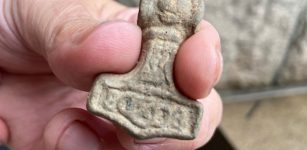 One Of A Kind Viking Age Hammer Of Thor Discovered In Ysby, Sweden
Archaeology | Oct 17, 2022
One Of A Kind Viking Age Hammer Of Thor Discovered In Ysby, Sweden
Archaeology | Oct 17, 2022 -
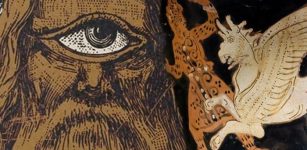 Arimaspians: Mysterious Mighty Warriors With One-Eye
Featured Stories | Mar 9, 2021
Arimaspians: Mysterious Mighty Warriors With One-Eye
Featured Stories | Mar 9, 2021 -
 Rare Bronze Hand Found At Roman Vindolanda
Archaeology | Jul 11, 2023
Rare Bronze Hand Found At Roman Vindolanda
Archaeology | Jul 11, 2023 -
 Central European Prehistory Was Highly Dynamic – New Study Shows
Archaeology | Aug 27, 2021
Central European Prehistory Was Highly Dynamic – New Study Shows
Archaeology | Aug 27, 2021 -
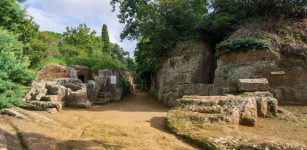 Etruscan City Of Cerveteri With Magnificent House-Like Tombs Decorated With Scenes From Life And Death
Featured Stories | May 17, 2022
Etruscan City Of Cerveteri With Magnificent House-Like Tombs Decorated With Scenes From Life And Death
Featured Stories | May 17, 2022 -
 World’s Oldest And Largest Maya Structure Revealed By LIDAR
Archaeology | Jun 9, 2020
World’s Oldest And Largest Maya Structure Revealed By LIDAR
Archaeology | Jun 9, 2020 -
 The Strange Story Of The Grave Of Copernicus
Featured Stories | Jan 5, 2024
The Strange Story Of The Grave Of Copernicus
Featured Stories | Jan 5, 2024 -
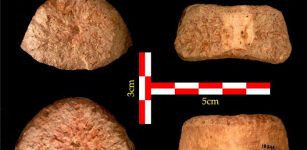 1.5 Million-Year-Old Human Vertebra Discovered In Israel’s Jordan Valley Sheds New Light On Migration From Africa To Eurasia
Archaeology | Feb 3, 2022
1.5 Million-Year-Old Human Vertebra Discovered In Israel’s Jordan Valley Sheds New Light On Migration From Africa To Eurasia
Archaeology | Feb 3, 2022 -
 Abundantia: Roman Goddess Who Was Shaking Her Gifts From Cornucopia – ‘Horn Of Plenty’
Featured Stories | Nov 4, 2019
Abundantia: Roman Goddess Who Was Shaking Her Gifts From Cornucopia – ‘Horn Of Plenty’
Featured Stories | Nov 4, 2019 -
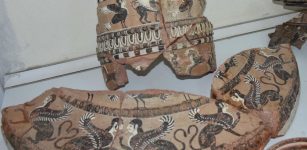 One Of A Kind 2,500-Year-Old Ritual Wash Basin Painted With Mythological Figures Discovered In The Ancient City Of Klazomenai
Archaeology | Oct 1, 2022
One Of A Kind 2,500-Year-Old Ritual Wash Basin Painted With Mythological Figures Discovered In The Ancient City Of Klazomenai
Archaeology | Oct 1, 2022 -
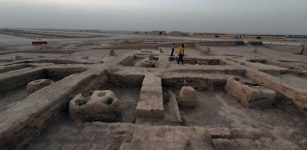 Ancient Parthian City With Hundreds Of Artifacts Unearthed In Iraq
Archaeology | Aug 16, 2022
Ancient Parthian City With Hundreds Of Artifacts Unearthed In Iraq
Archaeology | Aug 16, 2022 -
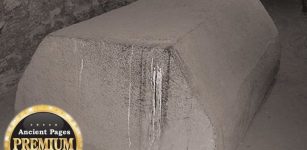 Mystery Of Ancient Sarcophagi In Egypt
Ancient Mysteries | Aug 26, 2015
Mystery Of Ancient Sarcophagi In Egypt
Ancient Mysteries | Aug 26, 2015 -
 Medieval Celtic Mystery Written In Konungs Skuggsja – The King’s Mirror
Featured Stories | Sep 13, 2018
Medieval Celtic Mystery Written In Konungs Skuggsja – The King’s Mirror
Featured Stories | Sep 13, 2018 -
 Unusual Underwater Archaeological Discovery In California May Confirm Thousand-Year-Old Legend And Re-Write Ancient History
Featured Stories | Aug 15, 2024
Unusual Underwater Archaeological Discovery In California May Confirm Thousand-Year-Old Legend And Re-Write Ancient History
Featured Stories | Aug 15, 2024 -
 Viking Cemetery In Lutomiersk And DNA May Solve The Mystery Of Norse Warriors In Central Poland
Vikings | Jan 7, 2025
Viking Cemetery In Lutomiersk And DNA May Solve The Mystery Of Norse Warriors In Central Poland
Vikings | Jan 7, 2025 -
 New Evidence Of Human Habitation At Panga ya Saidi Cave, Kenya That Dates Back 78,000 Years
Archaeology | May 11, 2018
New Evidence Of Human Habitation At Panga ya Saidi Cave, Kenya That Dates Back 78,000 Years
Archaeology | May 11, 2018 -
 Beautiful Mosaics In 1,300-Year-Old Church Discovered In The Lower Galilee
Archaeology | Aug 29, 2020
Beautiful Mosaics In 1,300-Year-Old Church Discovered In The Lower Galilee
Archaeology | Aug 29, 2020 -
 Was Biblical King David Unknowingly Part Of A Secret Master Plan?
Ancient Mysteries | Jul 1, 2021
Was Biblical King David Unknowingly Part Of A Secret Master Plan?
Ancient Mysteries | Jul 1, 2021 -
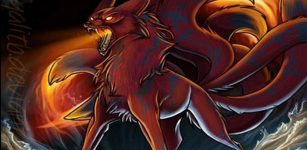 Yokai Kitsune: Charming And Cunning Liar With Double Nature In Japanese Folklore
Featured Stories | May 22, 2020
Yokai Kitsune: Charming And Cunning Liar With Double Nature In Japanese Folklore
Featured Stories | May 22, 2020 -
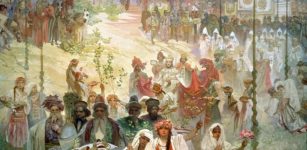 Ancient DNA Unveils How Slavs Transformed Europe
Archaeology | Sep 10, 2025
Ancient DNA Unveils How Slavs Transformed Europe
Archaeology | Sep 10, 2025

